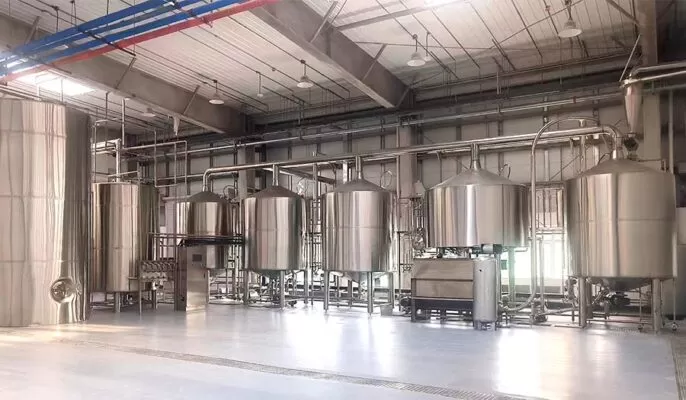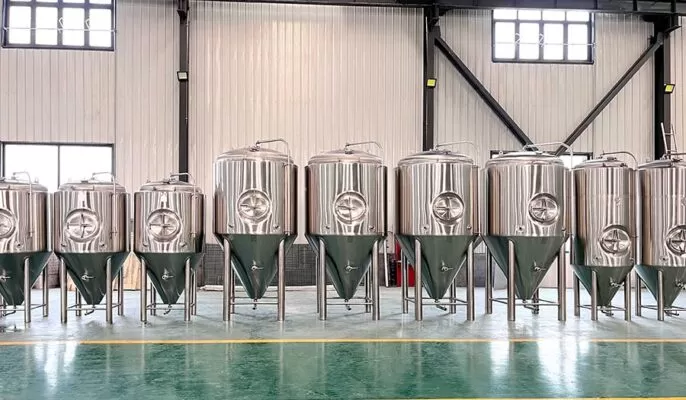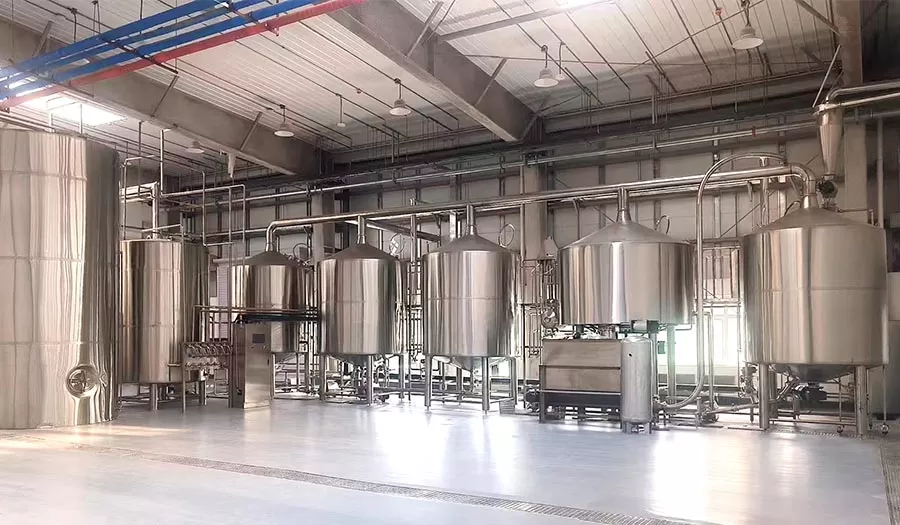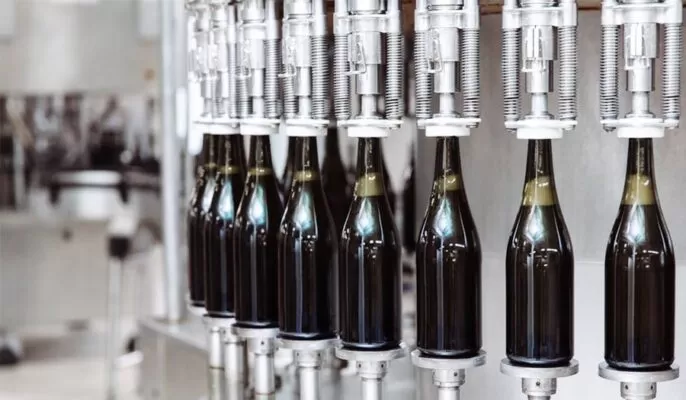The craft beer industry has been one of the fastest-growing areas of the entire beer industry, with a growing demand for high-quality beers. Breweries of all kinds are popping up. Many customers will discuss equipment configuration issues when consulting Micet engineers. Different craft beer equipment configurations will also affect the price of beer equipment. Micet tailors a complete set of standard craft beer equipment according to customer requirements. What does the standard craft beer brewery equipment include? Let’s read on.
What is professional craft beer equipment?
Professional craft beer equipment is special equipment designed for the large-scale production of beer and other fermented beverages. These systems vary in size and complexity, from small units used in craft breweries to large industrial configurations.
Ancient cultures brewed beer using basic tools and methods, but as the industrial age began, more efficient and standardized brewing systems were needed. Today’s professional brewing systems are a testament to centuries of innovation and refinement.

Professional craft beer equipment
Setting up a commercial brewery requires careful selection and installation of specialized equipment for each stage of the beer production process. Brewery equipment is at the heart of the brewing process. It includes various components such as mash tuns, lauter tuns, brew kettles and whirlpool tanks that work together to convert wort into wort. The process begins by mixing malt flour with water in a hydrator in the mash tun. After a set time, the mixture is transferred to the lauter barrel, where it is separated into liquid wort and spent grains. The wort is then boiled in a brewing kettle and hops and other ingredients are added at specific times to achieve the desired flavor profile.
Brewing system components
- Mash Tun: extracts sugar, starch, color and flavor from grains; mashing process – used to convert starch into sugar.
- Brewing kettle: Large stainless steel kettle that boils wort with hops and other ingredients.
- Vortex: A rotating vessel is used to separate hop fragments and coagulated proteins from boiling wort. After boiling, remove residue and sediment.
- Fermentor: An insulated and temperature-controlled container used for primary fermentation. Yeast converts sugar into alcohol and carbon dioxide.
- Filtration system: Filters out impurities for clarity and purity.
- Packaging equipment: bottling, canning and barreling equipment
Depending on the specific production goals, more specialized equipment may be required, such as grain mills, yeast propagation machines, bottling machines, barrel washers, labeling machines, etc.
Professional brewing systems by size
- Nano brewery: The batch capacity is 1-3 barrels per batch, suitable for home-brew beer bars, tasting rooms and small bars.
- Small breweries: These are perfect for small commercial breweries or even enthusiastic home breweries. Systems that produce up to seven barrels (31 gallons each) can cost between $15,000 and $100,000.
- Small craft breweries: A system with a capacity of 7 to 15 barrels may cost between $100,000 and $500,000.
- Regional breweries: Each batch capacity is 15-6000 barrels, suitable for expanding small breweries and regional distribution
- Large Breweries: For large-scale commercial production, these systems have huge capacities. The capacity is 6000+ BBL per batch, and major craft breweries are distributed across the country.
- Specialized systems: Also to regular brewing processes, there are also dedicated systems designed for specific beers such as sour beers, lambic beers, or non-alcoholic beers. Their prices can vary depending on their complexity and specialization.
Batch sizes, unit numbers and layouts can be customized to meet specific production goals. The Nano system allows brewpubs to conduct small-batch testing on-site, while small breweries can scale up with more tanks as demand increases. For large regional or national-scale breweries producing thousands of barrels per batch, equipment footprint, power requirements and costs increase .

Professional craft brewing system functions
Professional brewing systems integrate these stages, ensuring efficiency, consistency and scalability.
- Mashing: The first step is to soak the grains in hot water to activate enzymes that convert starch into fermentable sugars. The brewing system’s mash tun facilitates this process.
- Boiling: The wort obtained after mashing is boiled in a boiling pot together with hops. Not only does it extract flavor from the hops, but it also sterilizes the wort.
- Cooling: After boiling, it is crucial to cool the wort to a temperature conducive to fermentation. Modern brewing systems are equipped with efficient heat exchangers that speed up the cooling process.
- Fermentation: The cooled wort is transferred to a fermenter, where yeast is added. Yeast consumes fermentable sugars, producing alcohol and carbon dioxide in the process. Depending on the type of beer, fermentation can last from a few days to a few weeks.
- Packaging: After maturation, the beer is filtered and carbonated (if necessary) and then packaged in bottles, cans, or kegs.
Professional brewing equipment divided by function
| Function | Equipment Used |
| Milling | Roller mill, hammer mill, grist case |
| Mashing | Mash tun, direct fire kettle, steam jacketed kettle, infusion tank |
| Lautering | Lauter tun, mash filter, grant |
| Wort boiling | Direct fire kettle, steam jacketed kettle, whirlpool |
| Cooling | Plate heat exchanger, glycol chiller |
| Fermentation | Uni-tank, CCT, open square fermenter, cone or top cropping tank |
| Maturation | Uni-tank, brite tank, horizontal or vertical beer tank |
| Filtration | Plate and frame filter, diatomaceous earth filter, centrifuge |
| Carbonation | Brite tank, uni-tank, carbonation stone |
| Packaging | Bottling line, keg washer/filler, canning line, pouch filler |
| CIP | Spray balls, pumps, tanks, cleaning chemicals |
More equipment is also required, such as grain handling, water treatment, laboratory testing equipment, piping, steam, compressed air and process control systems.
Application of professional craft brewing equipment system
The versatility of professional brewing systems allows brewers to cater to this diverse palate and delve into a variety of beer styles.
Ale production
Ales cover a variety of beers, from IPAs to stouts. Ales are fermented at higher temperatures and use top-fermenting yeast strains. Given its popularity and diverse styles, most brewing systems are optimized for beer production.
Beer production
Beer is fermented at lower temperatures using bottom-fermenting yeast strains. They must a long ripening period, often at temperatures close to freezing. Brewing systems designed for beer have specialized fermenters and cooling systems to meet these needs.
Alcohol-free beer
As demand for alcohol-free beers continues to grow, many breweries are exploring the category. Alcohol-free beer brewing systems are equipped with specialized equipment that removes or limits alcohol during the brewing process.
Home brew beer bar
Many restaurants and bars brew beer on site, providing customers with a fresh and unique experience. These businesses need brewing systems that not only produce high-quality beer, but also fit into the aesthetic of the business.
How to choose a professional brewing system?
Determine your size
Before delving into the technical details, determine the size of your brew. Are you a home brewery, a small brewery or an industrial scale brewery. The size of your brewery will determine system size, functionality, and budget.
Budget
As with any major investment, budget plays a vital role. While it’s important to stay within financial limits, remember that quality often comes at a price. Weigh the system’s features against its cost to ensure you get the best value for your money.
Technical Support
Brewing systems, especially advanced brewing systems, can be tough. Choose a brand that offers strong technical support, whether through detailed manuals, a helpline, or on-site training.
Research brewing equipment brands
Each manufacturer has its own characteristics and reputation. Micet is known for its automation and customized services and can help guide you to make the right choice.






I loved even more than you will get done right here. The picture is nice, and your writing is stylish, but you seem to be rushing through it, and I think you should give it again soon. I’ll probably do that again and again if you protect this walk.